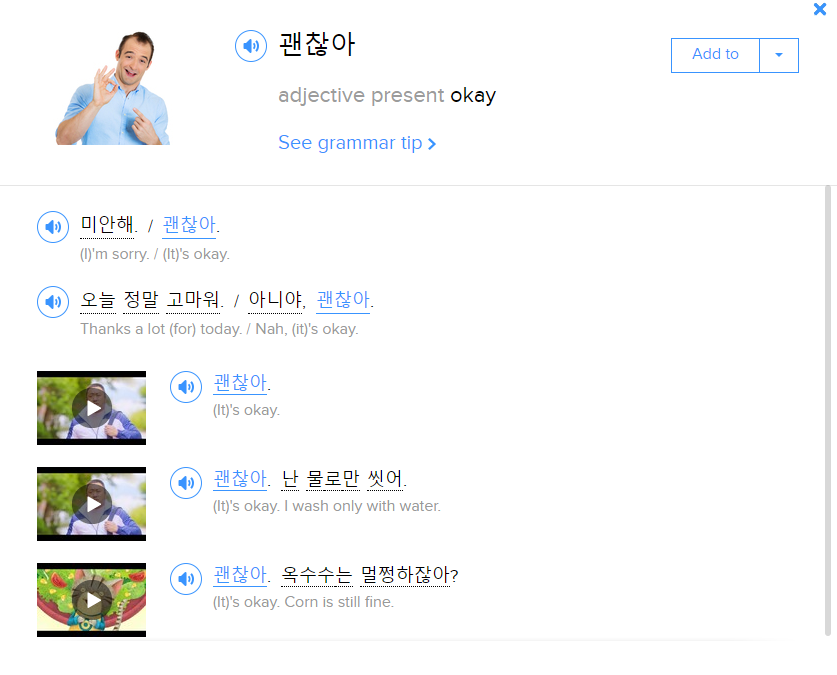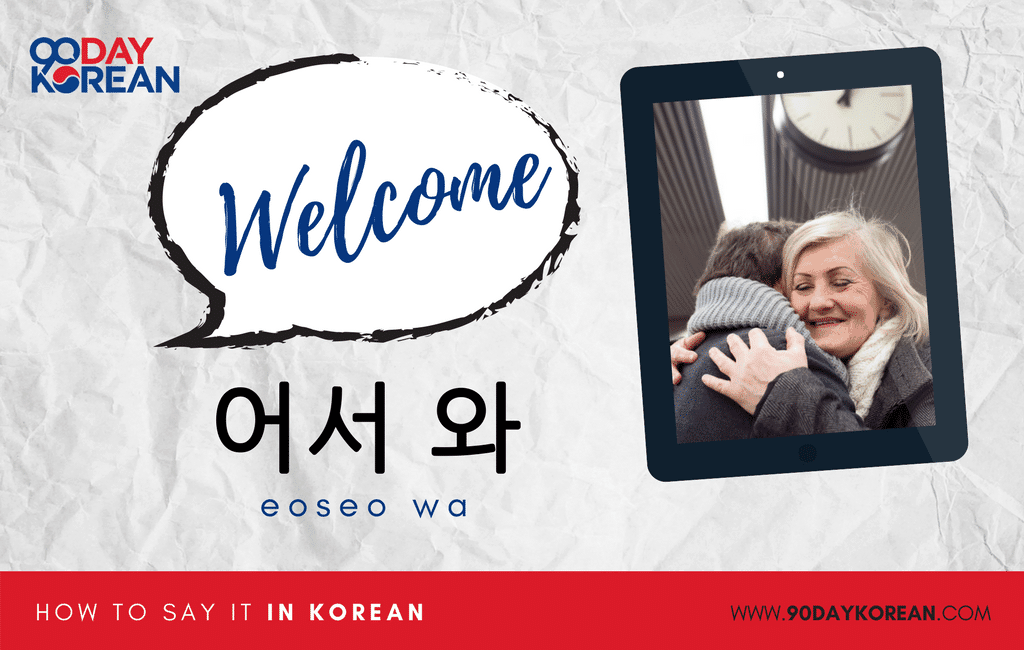
9 Courteous Ways to Say You’re in Korean (with Informal, Polite
1.3 천만에요 (cheonmaneyo) 천만에요 (cheonmaneyo) is a very formal way of saying "you're welcome in Korean". It is derived from the number 천만 (cheonman), meaning "ten million" in English. The idea behind this phrase is that even if you performed the favor ten million times, the other person still wouldn't need to thank you.

The Right Way To Say You're In Korean LearnKorean24
Learn useful and authentic Korean words and phrases for How To Say 'You Are Welcome'. With Memrise, you'll watch and learn from real native speakers.

[Korean for Beginners] How to Say "You're in Korean YouTube
Photo by Morvanic Lee on Unsplash. 7 ways of saying "You're welcome" in Korean *Formal → Informal. 1. 천만에요. It's the easiest to find in dictionaries or textbooks.

아니에요 How To Say You're in Korean Kimchi Cloud
Tips for Using "You're Welcome" in Korean. Here are some tips to keep in mind when using the expressions above: 1. Non-Verbal Expressions. Koreans often rely on various non-verbal gestures to express gratitude or show politeness. Nodding your head or giving a slight bow while saying "you're welcome" can further reinforce your.

10 LifeChanging Ways To Say You're In Korean Ling App
Now that you've polished your Korean language skills, let's dive into the different ways to say 'You're welcome' in Korean. It's important to understand that the phrase can vary depending on the context. Whether you're in a formal or informal setting, we'll explore the appropriate expressions to use..

"Thank you" and "You're in Korean Common Korean Phrases by
This is the highest level of Korean politeness level. So, if you want to learn the formal ways to say You're welcome in Korean, see the words and phrases below. 1. 아닙니다 (Animnida) English Translation: "No". You are probably wondering why Koreans say "No" as a response to "Thank you.". The locals usually say "No.

How to say “You’re in Korean How to speak “You’re
They both translate as "It's okay". 괜찮아요 is standard polite, and 괜찮습니다 is formal. These can also be used for saying 'you're welcome'. Just as in English, you might say to someone "It's okay" or "It's alright", you can use these in the same way in Korean. These both are more commonly used in spoken.

How To Say "You're In Korean YouTube
Here are the different ways of saying "you're welcome" in Korean in a formal way. 1. 천만에요 (cheonmaneyo) The Korean word 천만에요 (cheon-man-e-yo) comes from the number 천만 (cheonman), meaning "ten million" in English. The logic behind this expression is that the thing you are being thanked for doing is so small that.

How to say 'You're in Korean YouTube
In this way, they both function as 'you're welcome' in Korean. 별말씀을요 [byeol-mal-sseu-meu-ryo] 별말씀을요 [byeol-mal-sseu-meu-ryo] is another way to say 'you're welcome' in Korean. It has a similar meaning to 'don't mention it'. Compared to the other expressions, 별말씀을요 is a little more polite.

You Are In Korean / 12 Ways To Say Thank You And You Re
Click here to get our FREE App & More Free Lessons at KoreanClass101: https://goo.gl/47wjFALearn Korean manners with our Korean in Three Minutes series!In Ko.

How to Say ‘You’re in Korean Korean language, Korean words
Learn how to say you're welcome in Korean, how to say it in real life and how you can use Memrise to learn other real Korean phrases.

How to Say in Korean
Standard 'You're Welcome' in Korean. 1. 아니에요 (a-nee-eh-yo) The most common response to 'thank you' in Korean is '아니에요'. This is the word that you will hear the most often. Therefore, if you just want to learn one way of how to say 'you're welcome' in Korean, then learn this expression! When saying.

9 Courteous Ways to Say You’re in Korean (with Informal, Polite
Which literally means "ten million" but is used to express modesty when someone thanks you. It is however rare to use this in spoken Korean and will make you sound unnatural. So it is mainly used in written language such as novels and other books. When speaking, you should instead use:

How to say "You're in Korea YouTube
1. 천만에요: replies to gratitude. 어서 오세요: shows hospitality to the guest (welcomes to an arrival or an entering a place.) 환영합니다: also shows hospitality, and is also used to welcome new members to a group. 어서오세요 is mostly used in commercial places like tourist attractions, stores and restaurants, etc.

Ways to Say YOU'RE in Korean (NOT 천만에요) YouTube
Since we are talking about friends, let us learn the formal way to say You're welcome in Korean. 1. 아니야 (Aniya) English Translation: No. Similar from above, 아니야 (Aniya) means "No". The only difference you'll find is the absence of the Korean character 요 (yo) which makes it casual. Remember, you will only use the informal.

'Thank you' and 'You're in Korean Common Korean Phrases by
You can use one of the following examples as a response to "Thank you" in Korean. " 천만에요 [chun-man-e-yo]". This phrase is equivalent to "You're Welcome!" in English, and you will often learn to say, 천만에요, as a reply to "Thank you" in Korean. Interestingly, this expression usually appears in written, not in.